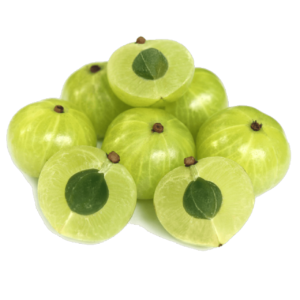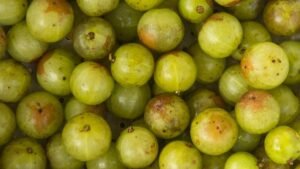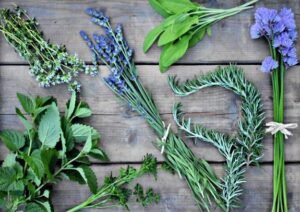Amla Health Benefits and Cultivation
Amla is a superfruit that is cultivated throughout India and neighboring countries. It contains about 8 times more amount of Vitamin C than an Orange, twice the antioxidants than an Acai berry and about 17 times more than a Pomegranate. It protects against various ailments like cold, cancer or infertility.
Ayurveda science has been using it for centuries and they claim that it can balance the 3 doshas i.e Kapha, Vista, and Pitta in the body and can eliminate the underlying causes of many diseases. It is well known for its medicinal & other benefits due to the presence of essential nutrients like Vitamins, Minerals, Antioxidants, Phytonutrients, Polyphenols and dietary fibres. The small and round sized berries have an unusual taste as it contains a variety of flavours ranging from bitter, pungent, sweet to aspiringent and sour, but no doubt, Amla is a powerhouse of nutrients.
Pineapple farming Project For Beginners
Here we will discuss the health benefits of Amla & its Cultivation.
Amla – An Introduction

Amla or Embelica officinalis is a translucent green fruit also known as Indian gooseberry or Nelli, belongs to Phyllanthaceae family and has derived its name from the Sanskrit word ‘Amalaki’ which means ‘nectar of life’ and can protect us from many ailments. The high concentration of Vitamin C in it helps the body to recover from illness and acts as an immunity booster. Also, the Antioxidants and Vitamins serve many health benefits.
It also contains several flavonols and chemicals that have been proven to improve memory. It has cooling and laxative properties that help in stomach related disorders like acidity, burning sensation, pain abdomen, ulcers, etc. It is also used in the preparation of many health care products like hair oil dye shampoo face creams and tooth powder in India it is also used to make pickles. Amla is cultivated for commercial purposes too and is a very profitable farming practice. It can be grown at homes in pots until they attain a height of 10 inches and then transplanted outdoors.
Nutritional value of Amla
Amla consists of so many nutrients and for every 100gm it consists of:
How can you start Pomegranate farming?
- Energy – 58kilocalories
- Fiber – 3.4%
- Proteins 0.5%
- Fat – 0.1%
- Carbohydrates – 13.7 gram
- Calcium – 50%
- Iron – 1.2 milligram
- Carotene – 9 microgram
- Thiamine – 0.03 gram
- Riboflavin 0.01 milligram
- Nicene – 0.2 milligram
- Vitamin – 600 milligram
Health Benefits of Amla
The antioxidants, vitamins & several nutrients and chemicals found in Amla berries have several health benefits of which we mention some of them here.
- Relief from Cough & Cold – Amla contains antimicrobial properties that protects from various bacterial and viral infections like cough and cold. Vitamin C is a powerful antioxidant in Amla that strengthens our immune system and minimises the risk of getting a cough, cold fever and flu.
- Vitamin C – Amla has Vitamin C as an essential nutrient that provides many benefits such as stabilizing free radicals, enhancing collagen production and enhancing iron absorption. It also guards against the chronic diseases, strengthens immunity, improves brain functioning and main ocular health. It also protects from deficiency diseases of Vitamin C like swelling and discoloration of gums, bleeding of gums, nosebleeds , poor healing of wounds, weakness, fatigue and joint pain.
- Digestive health – Amla is a rich source of antioxidants like Vitamin C, Vitamin A and other compounds like phytonutrients, polyphenols and flavonoids that protects our digestive system and minimises the risk of colon cancer, abdominal cancer, pancreatic cancer, intestinal cancer and stomach cancer. The dietary fibres in Amla improves bowel movement, stool elimination and it also helps in relieving constipation and other gastrointestinal issues like abdominal pain, irritable bowel syndrome, gas bloating and flatulence.
Gir cow Farming project in India

- Mouth ulcers – The antimicrobial properties in Amla fights against various bacterial, viral and fungal infections that cause mouth ulcers and help in treating them.
- Anti inflammatory – Vitamin C, the anti-inflammatory compound provides relief from pain and inflammation caused by inflammatory diseases like arthritis, rheumatism, rheumatoid, gouts and bronchial asthma.
- Reproductive health – It has aphrodisiac properties that improves reproductive health in both men and women.
- Bones – It strengthens our bones and teeth due to the bone strengthening minerals like Calcium, Potassium and Magnesium.
- Eyes – Amla is good for eyes and minimises the risk of age-related macular degeneration cataract and glaucoma. It improves vision and prevents eye dryness and minimises the risk of night blindness as well.
- Anti stress – It provides relief from stress and anxiety thereby protecting from physical, mental and emotional health issues.
- Nervous system – It maintains a healthy nervous system and minimises the risk of various neurodegenerative diseases like Parkinson’s disease, Alzheimer’s disease, Amnesia and Dementia. It provides several cognitive benefits like sharper memory, better focus, improved concentration and reduced mental confusion. It also maintains skin elasticity and prevents wrinkles and saggy skin due to the production of collagen.
- Respiratory health – It improves our respiratory health and minimises the risk of lung cancer and lung inflammation.
- Immunity – The antioxidants and Vitamin C enhances the production of white blood cells and thus strengthens our immune system.
- Weight loss – The dietary fibres provide stomach satiety and controls overeating, thereby promoting weight loss.
- Prevents Cancer – Products of cells and tissues from free radical damage and minimises the risk of several cancers like colon cancer lung cancer pancreatic cancer breast cancer abdominal cancer stomach cancer and prostate cancer and also counter attacks the side effects caused by anticancer drugs.
- Regulates Cholesterol – It reduces LDL cholesterol in the body and minimises the risk of atherosclerosis & gall stones.
- Blood pressure – It improves blood circulation in the body, providing relief from high blood pressure or hypertension.
- It improves cardiovascular health.
- It helps in regulating blood sugar levels.
- It provides relief from sleep disorders.
- Liver – It helps in maintaining our liver health and the dietary fibres helps in eliminating toxins, pollutants and other unwanted substances from the body, reducing the burden of detoxification from the liver.
Bamboo farming project for beginners.
- It helps in regulating acid levels in the stomach and helps with indigestion, acid reflux and heartburn.
- Skin – It protects the skin cells from damage and keeps various signs of premature ageing at bay. It treats acne and pimples and acts as a natural skin cleanser. The essential nutrients in Amla nourishes the skin, improves skin health and makes it soft,supple and radiant and the antimicrobial properties protects the skin from various skin infections and it repairs the damaged tissues as well.
- Hair – Amla prevents premature greying of the hair, split ends, hair fall, dry hair, and hair loss. It also helps in treating dandruff and enhances hair colours.
Cultivation of Amla

Amla is a very profitable farming business and is cultivated throughout India. It is very popular in the east region and is used in Ayurveda for the preparation of medicines. It is also grown in China, Taiwan, Indonesia, Malaysia, Thailand, Sri Lanka, Costa Rica and Reunion Island. In India, it is cultivated in the states of Uttar Pradesh, Gujarat, Maharashtra, Madhya Pradesh, Rajasthan and Tamilnadu with a total area of production of about 50,000 hectares and annual production of about 2,00,000 tonnes of fruit.
Climate & Soil Requirement for Amla Cultivation
Amla being a tropical plant requires an annual rainfall of 630 to 800 mm for ideal growth. The young plants should be protected from hot winds in May and June months and from frost during winter months. The mature plants can thrive in freezing temperatures as well as a high temperature up to 46 degrees celsius.
Bee farming project in details.
Amla can be grown in moderate alkaline soils and it is well adapted to dry regions as well. Light and medium heavy soils are good for amla cultivation except pure sandy soil. The soil should have good drainage capability with the pH of upto 9.5 and it can tolerate sodium levels up to 30%.
Varieties of Amla
The different varieties of Amla are:
- Banarasi
- Chakaiya
- Francis
- NA-4 (Krishna)
- NA-5 (Kanchan)
- NA-6 (Amrit)
- NA-7 (Neelam)
- NA-10 (Balawant)
- BSR-1 (Bhavanisagar)
Plantation & Fertilizer Requirements
Before plantation, each pit should be applied with 15 kg of well decomposed farmyard manure and 0.5 kg of Phosphorus. Every year during September and October 30 grams of Nitrogen should be applied for up to 10 years for each tree. Young plants should be planted with a spacing of 6m×6m or 8m×8m and the size of the pit should be 1m×1m×1m and that are left for 15 to 20 days exposed to sunlight.
Number of seedlings should be planted @200 per acre or 500 per hectare, applying 5 tons of FYM per acre and N:P2O5:K2O = 90:120:48 kg per acre.

Farming guide for elephant foot yam.
Propagation of Amla
Amla is mostly propagated by budding, wedge and approach grafting. Budding is done on one year old seedlings and the buds are collected from the best varieties which can yield big sized fruits. The older trees that are poor yielders can be changed into superior varieties by working on top.
Water Requirement in Amla farming
Agra can tolerate drought conditions but it is mostly grown as a rainfed fruit crop and in the first two to three years it is essential to irrigate for better growth. During summer, irrigation intervals of 4 to 5 days should be followed and it should be stopped in the month of November-December when it is bearing trees, for better flowering in the following season. Drip irrigation is mostly practiced along with fertigation to save 30 to 40 % water and 20 to 30% fertilizers.
Pruning & Mulching of Amla plants
At the end of December, the dead, diseased, weak crisscrossing branches and suckers should be pruned off leaving only 4 to 5 well shaped branches with a wide angle of about 0.75 m from the ground level.
The crops should be mulched with paddy straw or wheat straw during summer at the base of the tree up to 15 to 20 cm from the trunk of the tree.
Intercropping
Groundnut, horse gram, pulses and other leguminous crops or medicinal and aromatic crops can be grown as intercrops for amla plants during the first three years of cultivation.
Commercial farming of mustard in details.
Pests & Diseases of Amla
Pests
- Bark Eating Caterpillars – It is controlled by injecting dichlorvos @ 1 ml in 10 ml of water or kerosene or endosulfan @ 2 ml per litre of water and then seal the holes with clay.
- Sucking Pests – It is controlled by spraying dimethoate @2ml per liter or Phosalone 0.05%.
- Aphids – It is controlled by spraying dimethoate @2ml per liter or Phosalone 0.05%.
- Mealy bugs – Intercultivation is recommended for its control during summers. Also, spray Chlorpyrifos @2.5ml per litre or neem oil @ 5ml per litre.

Diseases
- Rust – Spray Chlorothalonil @ 2g or Mancozeb @ 2.5 gram per litre or Sulphur @ 2 gram per litre or Bitertanol at 1 g per litre during December month for its control.
- Black spot – Spray copper oxychloride @ 3 gram per litre or 1% of Bordeaux mixture soon after rainfall and during food development stage at an interval of 15 days.
- Fruit necrosis – Spray Borax @ 6 gram per litre at 15 days time interval for three times during fruit development stage.
Harvesting & Yield of Amla
Plants start bearing after 4 to 5 years of plantation and it can be harvested during the month of February when it becomes dull greenish yellow colour from light green. The fruits become hard when they mature, so they do not fall at gentle touch and therefore it requires vigorous shaking. The fruits can also be harvested using long bamboo poles which are attached with hooks.
Cost Economics of Amla Farming:
| Economics of Amla Farming for 1 Ha of Plot | |||||||
| 1st Year Expanses | Expanses up to 5th year | ||||||
| A | Variable Cost | Operations | Qty | Rate | Unit | Amount | |
| 1 | Primary tillage operations | Tractor / Rotavator | 4 | 1000 | Hrs | 4000 | |
| 2 | Cost of plant | 500 | 125 | 62500 | |||
| 3 | Weeding | 15 | 300 | Mandays | 4500 | 30000 | |
| 4 | FYM / Compost | Composting | 10 | 2500 | Trolly | 25000 | 20000 |
| 5 | Liquid Fertilizer | Fertigation | 1 | 15000 | Set | 5500 | 15000 |
| 6 | Conventional Fertilizer | DAP + Urea + Potash | 1 | 3500 | Set | 3500 | 20000 |
| 7 | Insecticides, Pesticides & Spraying | 1 | 5000 | Set | 5000 | 4500 | |
| 8 | Irrigation & Electricity | 1 | 4500 | Set | 4500 | 5000 | |
| 9 | Harvesting | Plucking | 15 | 300 | Mandays | 4500 | 5000 |
| 10 | Miscellaneous | 1 | 3000 | Set | 3000 | 5000 | |
| Total Variable cost | 122000 | ||||||
| B | Fixed Cost | ||||||
| Investment on MIS | 70000.00 | ||||||
| a | Interest on MIS value @ 18% | 12600.00 | |||||
| b | Depreciation @ 10% | 7000.00 | |||||
| c | Maintenance @ 5% | 3500.00 | |||||
| Total Fixed Cost | 23100.00 | ||||||
| Total Cost (A+B) | 145100.00 | 104500 | |||||
| Description | Yield | Rate | Amount | ||||
| Amla Yield | 20000 | 25 | 500000.00 | ||||
| Total Expenditure | 249600.00 | ||||||
| Net Income | 250400.00 | ||||||
| Note: This is a tentative rate considered. This may varies place to place. | |||||||
| Further year by year you may get up to 4 – 4.5 lakh annualy. | |||||||
A well maintained Amla tree can yield up to an age of 70 years and any mature tree which is 10 years old would yield up to 50 to 70 kg of fruits with an average weight of 60 to 70 gram per fruit.
Papaya farming project for beginners.
Conclusion
Amla has a great demand in the Indian market as well as in the international market because of its medicinal values and it can be transported to local markets or any herbal companies for commercial business. If it is kept in dry conditions, it has a long period of life. It requires a low investment and minimum care and due to its utmost health benefits and so many medicinal values, the farming of this crop proves to be a very profitable business for the farmers.




